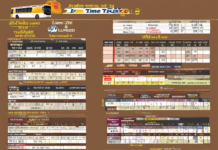With April 2024 right around the corner, it’s essential to start planning and organizing your schedule for the month ahead. Having a clear and structured plan in place can help you stay on top of your commitments, prioritize tasks effectively, and make the most out of your time. To assist you in this endeavor, we have curated a detailed guide to help you make the most of the April 2024 calendar.
Importance of Planning Ahead
Planning ahead is crucial for maximizing productivity and reducing stress. By organizing your tasks and commitments in advance, you can:
-
Prioritize Tasks: Planning allows you to identify key tasks and prioritize them based on their importance and deadlines.
-
Allocate Time Efficiently: By mapping out your schedule in advance, you can allocate time for each task effectively, ensuring you have enough time to complete them without feeling rushed.
-
Reduce Procrastination: Having a plan in place can help reduce procrastination as you have a clear roadmap of what needs to be done and when.
-
Flexibility: While plans may need to be adjusted, having a structured plan in place gives you the flexibility to adapt to unexpected changes without feeling overwhelmed.
-
Work-Life Balance: Effective planning enables you to allocate time for work, personal commitments, and relaxation, ensuring a healthy work-life balance.
Tips for Utilizing the April 2024 Calendar
1. Start by Setting Goals
Before filling in your calendar, identify your goals for the month. Whether it’s work-related targets, personal milestones, or self-care objectives, having clear goals will guide your planning process.
2. Use a Digital Calendar
Digital calendars offer the advantage of accessibility across devices and the ability to set reminders. Consider using apps like Google Calendar or Outlook to keep track of your schedule efficiently.
3. Color Code Your Activities
Assigning different colors to various types of activities (work, personal, fitness, etc.) can help you visually differentiate between them and manage your time effectively.
4. Include Buffer Time
Avoid overloading your schedule by including buffer time between activities. This allows room for unexpected delays or breaks, preventing burnout.
5. Review and Reflect
Regularly review your calendar to ensure you are on track with your plans. Reflect on what worked well and what needs improvement to refine your planning process.
Frequently Asked Questions (FAQs)
1. How far ahead should I plan my schedule?
It’s advisable to plan your schedule at least a week in advance to allow for adequate preparation and adjustments.
2. Should I prioritize tasks based on urgency or importance?
A balance of both is key. Prioritize tasks that are both urgent and important, followed by important tasks that are less time-sensitive.
3. How can I effectively manage a busy schedule?
Break down tasks into smaller, manageable steps, delegate when possible, and learn to say no to non-essential commitments.
4. Is it necessary to stick strictly to my planned schedule?
While flexibility is important, try to adhere to your schedule as closely as possible to maintain productivity and achieve your goals.
5. What should I do if unforeseen circumstances disrupt my plans?
Adapt quickly by rearranging your schedule, prioritizing urgent tasks, and rescheduling non-urgent activities as needed.
In conclusion, by planning ahead and utilizing the April 2024 calendar effectively, you can enhance your productivity, reduce stress, and achieve your goals with greater efficiency. Remember that flexibility and adaptability are key to successful planning, so be prepared to adjust your schedule as needed to navigate any challenges that may arise. Happy planning!






